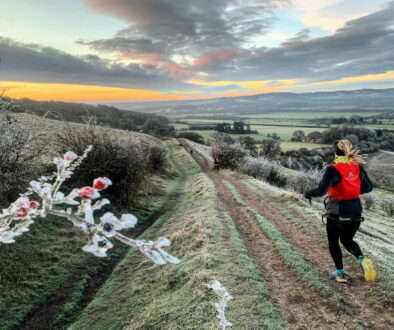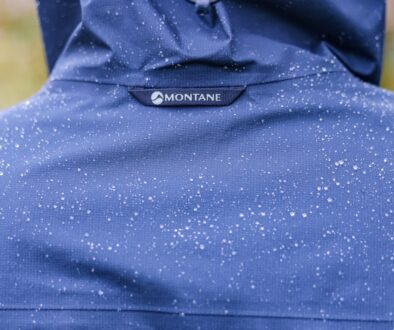Running in the snow can be a lot of fun. Here are 5 tips for running in snowy/icy conditions and/or in a ski resort.
You entered your Spring marathon months ago but are just realising that a) the weather can really be quite grim this time of year with ice cold mornings and the chance of snow, and b) you have an upcoming week of skiing that’s smack bang in the middle of your ramping up weeks. What can you do?
1 – Sounds obvious, but dress appropriately
This means layers, and extra cover for areas like hands and head. My winter get up (which I’ve been running in minus double-digit temperatures recently), is leggings, waterproof socks (more about them in a minute), t-shirt, long sleeve t-shirt, thin fleece gilet, fleece buff, fleece lined hat and gloves. I always carry at least one if not two additional layers in my running pack as well just in case the temperature drops.
2 – Waterproof socks or Gore-Tex shoes?
There are pros and cons for each. Waterproof socks are great when you may be post holing in calf deep snow – check out the ones from Bridgedale. The downside is they are very thick which means you may need to size up in your winter shoes. Gore-Tex shoes are perfect when the snow layer in compacted. The downside is if you do end up in slightly deeper snow, that Gore-Tex layer is now keeping the moisture in and not out. The shoes also tend to be a fair bit heavier than regular trail shoes.
3 – Micro spikes or studded shoes?
I have both and use both. Even trail shoes with the best tread will struggle on icy paths, when spikes or studs come into their own. Studded shoes are great if you know you will be on ice/snow for the whole run, but if you come across a bare patch, or a road section, suddenly they are suboptimal as you have no flexibility. Micro spikes are great if they are easy to use, but I often find I wait too long to take them both on and off. Both will really help confidence on slippery terrain. My studded shoes are the La Sportiva Blizzards, and my micro spikes are Grivel.
4 – Where to run?
If you are in a ski resort, the chances are there are signed snowshoe routes in the resort. These are great, as snow shoers compact down the super soft snow, making the paths much more runnable. If there are no obvious routes, just be sensible and avoid all ski runs, both downhill and cross country. Cross country skiers won’t appreciate their tracks being walked over, and running on a downhill piste is outright dangerous. Don’t be tempted to run on the pistes after the lifts have closed either, as this is when the piste bashers do their work. Some areas actively encourage hikers and snowshoers, so have multiple piste bashed routes for these.
5 – Be realistic
If you are on a ski holiday, there is a good chance you won’t be getting your weekly long run done, but even heading out for 45minutes in that post ski, pre apres-ski window really benefits your fitness. The roads are often kept very clear, so if its safe, even a short road loop will be better than nothing. I find running after skiing actually loosens up my muscles and eases the quad burn after a day on the slopes. Il always take my head torch and running gear just in case I can get out. Being in the snow also means the residual light is much brighter so even running at dusk isn’t so intimidating.
Hopefully we have inspired you to have the confidence to get out for a run even if you are surrounded by snow! Have fun!



